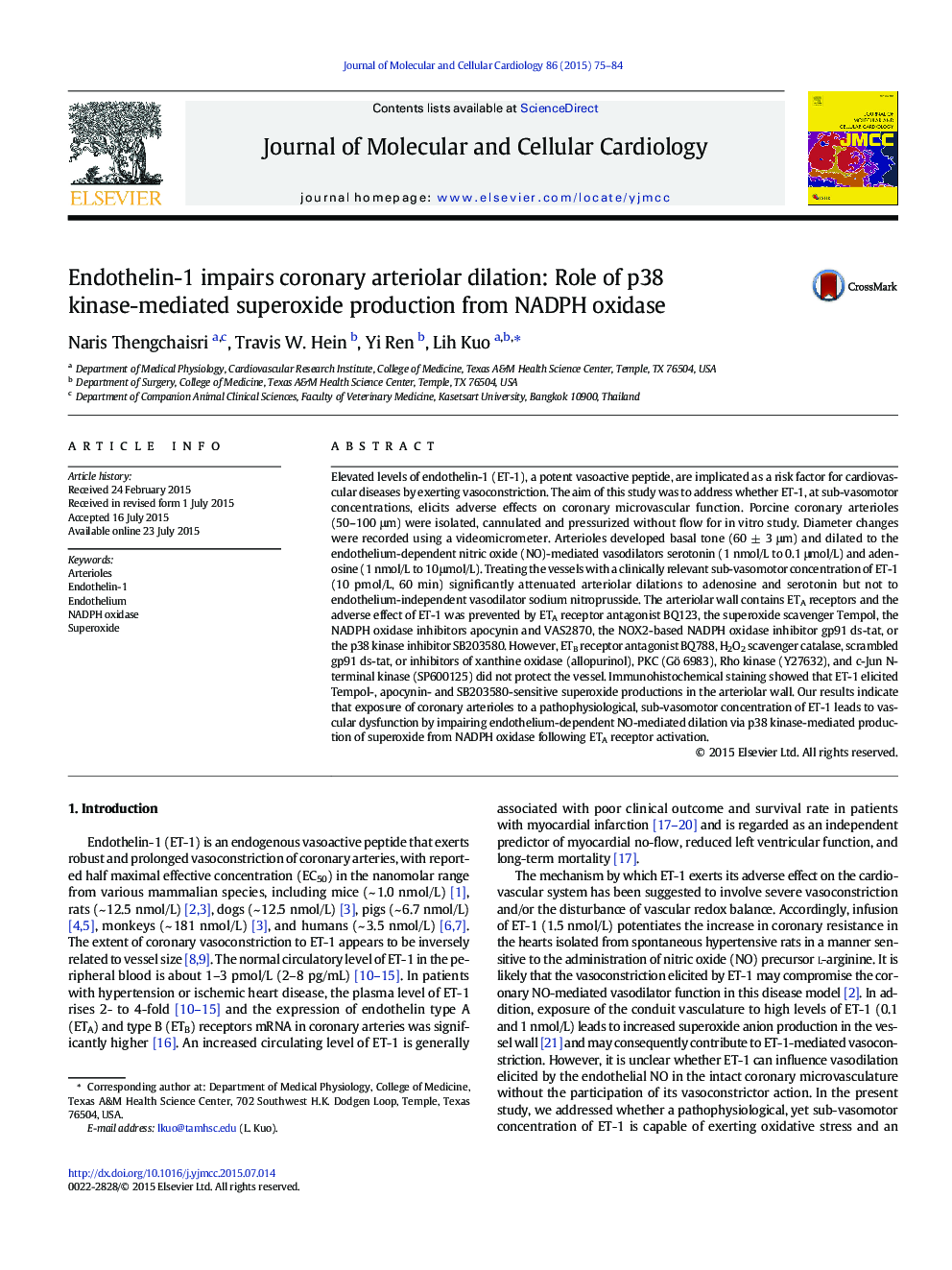| Article ID | Journal | Published Year | Pages | File Type |
|---|---|---|---|---|
| 8474130 | Journal of Molecular and Cellular Cardiology | 2015 | 10 Pages |
Abstract
Elevated levels of endothelin-1 (ET-1), a potent vasoactive peptide, are implicated as a risk factor for cardiovascular diseases by exerting vasoconstriction. The aim of this study was to address whether ET-1, at sub-vasomotor concentrations, elicits adverse effects on coronary microvascular function. Porcine coronary arterioles (50-100 μm) were isolated, cannulated and pressurized without flow for in vitro study. Diameter changes were recorded using a videomicrometer. Arterioles developed basal tone (60 ± 3 μm) and dilated to the endothelium-dependent nitric oxide (NO)-mediated vasodilators serotonin (1 nmol/L to 0.1 μmol/L) and adenosine (1 nmol/L to 10 μmol/L). Treating the vessels with a clinically relevant sub-vasomotor concentration of ET-1 (10 pmol/L, 60 min) significantly attenuated arteriolar dilations to adenosine and serotonin but not to endothelium-independent vasodilator sodium nitroprusside. The arteriolar wall contains ETA receptors and the adverse effect of ET-1 was prevented by ETA receptor antagonist BQ123, the superoxide scavenger Tempol, the NADPH oxidase inhibitors apocynin and VAS2870, the NOX2-based NADPH oxidase inhibitor gp91 ds-tat, or the p38 kinase inhibitor SB203580. However, ETB receptor antagonist BQ788, H2O2 scavenger catalase, scrambled gp91 ds-tat, or inhibitors of xanthine oxidase (allopurinol), PKC (Gö 6983), Rho kinase (Y27632), and c-Jun N-terminal kinase (SP600125) did not protect the vessel. Immunohistochemical staining showed that ET-1 elicited Tempol-, apocynin- and SB203580-sensitive superoxide productions in the arteriolar wall. Our results indicate that exposure of coronary arterioles to a pathophysiological, sub-vasomotor concentration of ET-1 leads to vascular dysfunction by impairing endothelium-dependent NO-mediated dilation via p38 kinase-mediated production of superoxide from NADPH oxidase following ETA receptor activation.
Related Topics
Life Sciences
Biochemistry, Genetics and Molecular Biology
Cell Biology
Authors
Naris Thengchaisri, Travis W. Hein, Yi Ren, Lih Kuo,
